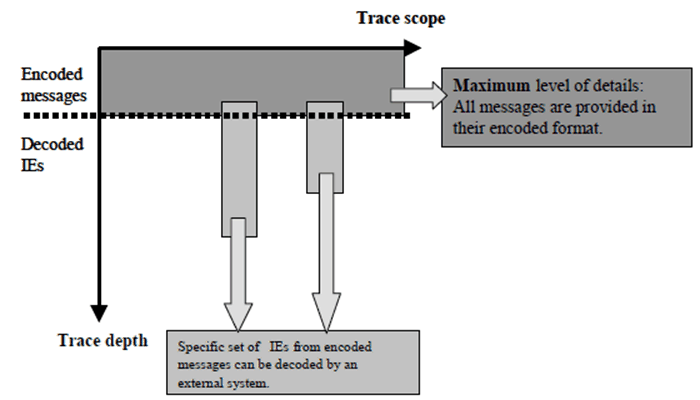Content for TS 32.421 Word version: 19.0.0
4 Trace concepts and high-level architecture p. 12
4.1 Trace concepts p. 12
The diversity of Trace requirements makes it difficult to identify and anticipate all the operator's specific needs. Thus, the objective of this TS is not to list an exhaustive set of information to meet all the requirements. Rather, Trace data is defined without any limitation on the 2 following dimensions:
- Trace scope: NEs and signalling interfaces to Trace.
- Trace depth: level of details of Trace data.

Figure 4.1.1: Maximum (or MaximumWithoutVendorSpecificExtension) Levels of details of Trace
(⇒ copy of original 3GPP image)
(⇒ copy of original 3GPP image)
The Minimum (or MinimumWithoutVendorSpecificExtension) Levels of detail allow for retrieval of a decoded subset of the IEs contained in the signalling interface messages (see Figure 4.1.2).

Figure 4.1.2: Minimum (or MinimumWithoutVendorSpecificExtension) Levels of detail of Trace
(⇒ copy of original 3GPP image)
(⇒ copy of original 3GPP image)
The Medium (or MediumWithoutVendorSpecificExtension) Levels of detail allow for retrieval of the decoded subset of the IEs contained in the signalling interface messages in the Minimum Level plus a selected set of decoded radio measurement IEs.
The Trace data recorded at each Level is defined in TS 32.423.